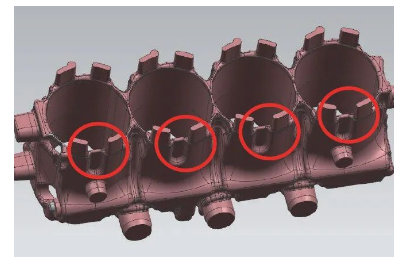Durability and Strength
The strength and durability of cast metal are why cast metal car parts have been the bedrock of the automotive industry. Casting processes that are used to produce parts that must withstand high temperatures and case issues typically involve the use of metals, such as aluminum, steel and iron. For instance, cast iron, which is often used in engine blocks and cylinder heads, has an excellent wear resistance and can withstand to high temperatures. Since aluminum is lighter than steel but offers similar strength, it is used in components such as pistons and wheels to reduce the overall vehicle weight and increase fuel economy. If left unused the car parts should last tens of thousands of miles without deteriorating at all due to the awesome materials that they are made from.
Cost-Effectiveness
Castable metal parts such as the direct metal laser sintering (DMLS) metal parts offered by Methods 3D, are low cost as compared to metal parts milled from solid or assembled components From a price perspective, casting metal parts is superior to traditional forms for all but low-volume production. The up-front costs in creating molds and the other casting equipment are offset by the low per-unit cost in large runs. For example, that a single mold can be made and parts in the thousands, perhaps millions, produced for a significantly less cost than forging or casting of metal is a great example. In an industry where cost cutting and high quality production are both critical, the effectivity of cast metal car parts can not be undermined.
Design Flexibility
Casting provides the ultimate in design construction, with the ability to create intricate shapes that would be otherwise impossible to manufacture. This is especially critical in the case of intricate components such as transmission parts or engine components that must fit in particular spaces and must fulfill very precise functional standards. One of the main reasons it remains one of the most popular methods in car manufacturing is the ability to cast with high detail and complexity without compromising the integrity of the part.

Increase in safety and performance
Increasingly, cast metal parts play a large role in the safety and performance of the vehicles developed today.Safety but also performance are always a strong part in automotive design. Crumple zones and components in the chassis that support safety systems rely heavily on the load-bearing capacity of cast parts. On top of that, because cast parts are so precise, they perform correctly when subjected to the different loads present in operation, which plays into overall vehicle reliability and performance. The reliability of these components is a direct reflection on the security ratings and efficiency of vehicles, affecting consumer confidence and favoritism.
Environmental Impact
Reducing environmental impacts is becoming more of a priority, and the automotive industry is playing its part through the increased use of cast car parts. Because metal casting uses only recyclables, old parts and scrap can be melted and cast into new products, reducing waste and the need for raw materials. Moreover, metal casting technology advancements have resulted in more effective production processes, which reduces energy consumption and production emissions.
Ultimately, cast metal car parts are indisposable, relied on heavily by the automotive sector to produce durable, affordable and sustainable, quality, flexibility in design, driveability and greater environmental-changing efficiency. As technology continues to progress, these parts are only going to become more critical, which means they sit at the very center of automotive manufacturing planning.